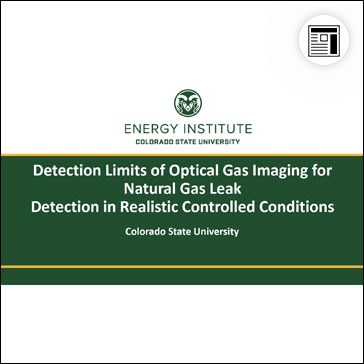Detection Limits of Optical Gas Imaging for Natural Gas Leak Detection in Realistic Controlled Conditions

Study Conducted by the Colorado State University Energy Institute
This study was conducted to assess the performance of the combination of the surveyor and the camera system in detecting leaks in controlled but realistic upstream gas field conditions using Optical Gas Imaging (OGI) at Colorado State’s Methane Emissions Technology Evaluation Center (METEC). Motivations for the study included establishing a basis for comparison of next-generation solutions for OGI surveys and gaining insight into the efficacy determinants of OGI surveys. Multiple teams participated simultaneously on a specific set of leak patterns to record and report data. Tests were performed throughout the year to create different naturally-occurring environments that could produce different sensitivity conditions for the OGI camera. There were two main categories of participants, compliance teams and LDAR teams, broken into 3 tiers of survey experience – LDAR High with 700 to 4000 surveys, LDAR Low with 25 to 200 surveys, and Compliance with 12 to 550 surveys. Results showed that operator experience had a greater impact than location or type of leak on detection rate, with 92% of LDAR High, 30% of LDAR Low and 23% of Compliance surveyors achieving detection rates of >60%, respectively. Many factors beyond camera sensitivity affect the success of finding leaks, with surveyor experience representing the key to the effectiveness of the process.

